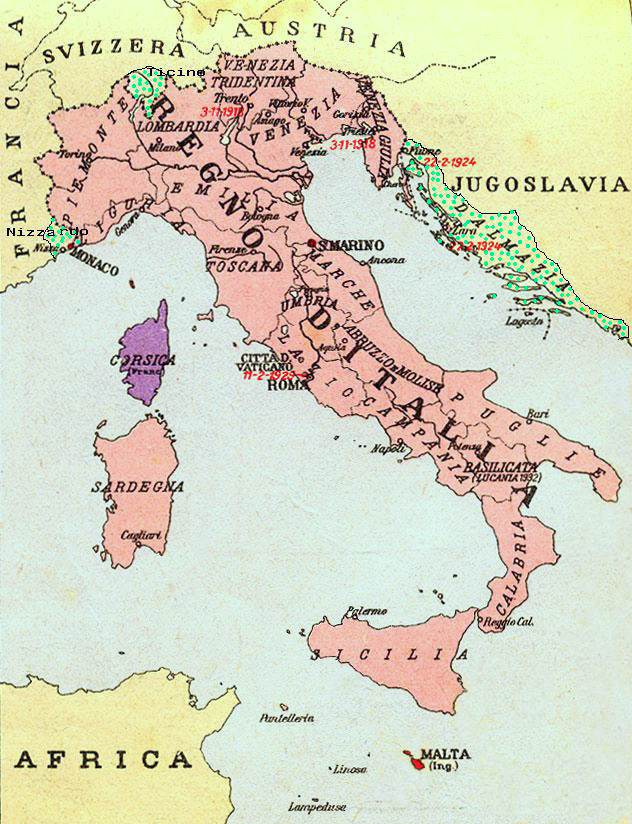Italian irredentism
Italian irredentism (Italian: irredentismo italiano) was a nationalist movement during the late 19th and early 20th centuries in Italy with irredentist goals which promoted the unification of geographic areas in which indigenous ethnic Italians and Italian-speaking persons formed a majority, or substantial minority, of the population.
Originally, the movement promoted the annexation to Italy of territories inhabited by an Italian indigenous population but retained by the Austrian Empire after Third Italian War of Independence in 1866.
In 1859, the Italian peninsula was similar to the Balkans; a grouping of separate nations, each with it's own language and culture. However, three aspects of the Italian peninsula made it different. One was the power and reach of the Catholic Church; the second was the centuries-long influence of the "standard Italian language" based on Tuscan, and third was the incessant invasions from foreign powers (France, Austria, Spain, Islam in the south, etc.). These three factors made it possible to form the Italian state.
From an Italian irredentist point of view, the concept would seem to include the basic peninsula; the islands of Sicily, Sardinia, and Corsica; the county of Nice in France (Nizza); the country of Monaco; the Swiss canton of Ticino and other Swiss Italian sections to the east; parts of Croatia and the Dalmatian coast in the Balkans, and maybe Savoia (France) in the far north and the island nation of Malta. It was like a 19th century version of the EU, with the promise of security and prosperity; however, not set up along linguistic or cultural lines.
From a Cisalpine/Padanist point of view, the concept would be much simpler, and would include the peninsula north of the Roman state. In my opinion, from an 1859 geopolitical point of view, it would include a politically decentralized Roman state (Latium) and the lands north of it. This would include Monaco, Nice, Savoia, Ticino, and at least Trieste in the east. Of course, far beyond Cisalpine identity, the continuously escalating events during the last twenty years have made a mockery of even European identity itself.
In a general pragmatic way, as far as American-Padanian identity goes, a heritage such as South Tyrolian could be thought of as Cisalpine. I can recall seeing a website once where there was some type of Trentinese-South Tyrolian club somewhere in perhaps New England, in which both Alpini-style hats and traditional Tyrolian dress was worn by some.
Even if Europe is destroyed, we can still continue to exist in the United States, Canada, Argentina, and Australia. We're experiencing the same fundamental problem that has continued over 6,000 years: citizens too afraid to stand up to their own governments or other powerful entities. Even if you simply vote-out the Fabianists/Globalists... the following wrath though their raw deceitful power in government and media is shocking. In the U.S., globalist-treason is centrally organized around the Council on Foreign Relations, a Fabianist billionaire political union with its hands clutched over the main choke-points of society.
.



No comments:
Post a Comment